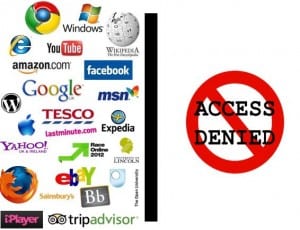OER Copyright and Licenses was the first Embedding OER Practice workshop run by Paul Stainthorp, Julian Beckton and Joss Winn. The session introduced the complexities of copyright legislation. In a world where the internet has become the first destination of choice when it comes to creating teaching and learning content, it offers an infinite source of materials and there are many common myths about their usage
- “It’s OK if it’s in a closed environment like Blackboard.”
- “If people put things (e.g. images) on the WWW, they can’t mind me using them.”
- “No-one’s going to sue the University over it.”
All of these are incorrect. It’s worth bearing in mind that in the copyright world everything belongs to someone. So although taking and reusing online content is easy, there are a complex set of rules and regulations to be aware of. Unfortunately there is also no single answer as to what can or cannot be taken but some guidelines are more fixed than others. For example you can reuse content if:
- You are the originator therefore you have the copyright
- You have the permission from the originator to reuse their materials
- The materials have a creative commons licence stating they are freely available
- The content is covered by a university licence to be used
- The content copyright has expired (usually a 70 year time span)
- The amount copied is not considered substantial
- You can claim a defence of fair dealing
The last two are where the complexity begins. Substantial is undefined. For example a square taken from the face of the Mona Lisa would be more substantial than the same sized square taken from the bottom right of the picture. The face would be more recognisable than her dark clothes so has a different significance in terms of copyright legislation. The defence of fair dealing is also an arbitrary ruling. While the work of others can be copied for criticism or review – e.g. teaching and learning – we can’t rely on this as a defence in law that the action was justified. There is no exception to copyright for education purposes in the UK as there is in other countries and the concept of fair dealing is less applicable in law than is often realised. When we take content there is always a risk and individuals have to consider the level of that risk.
Everything belongs to someone. A colleague gave the useful example of wanting to use the London Underground tube map in a book and having the publishers request permission. London Transport agreed but with restrictions on the artwork and a fee of £300. This applies to logos and trademarks and was relevant to me – when I talk about the digital divide I use the slide below.
How illegal is this? What is the risk level of stealing all these logos for educational purposes? Scary stuff if only because this illustrates how easy it is to do this without thinking through the potential consequences.
What all this does do is reinforce the value of Creative Commons licences which will be looked at next.
